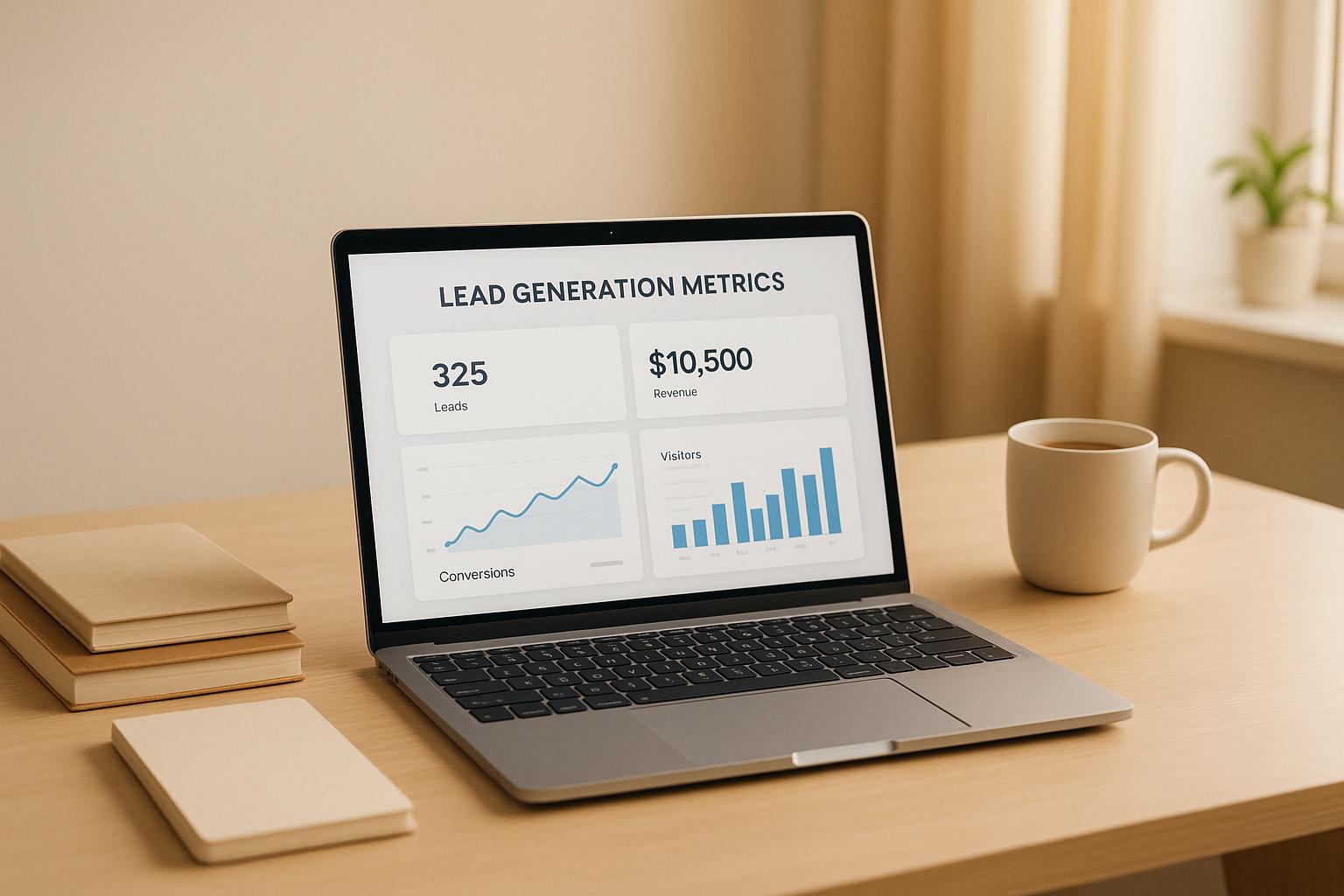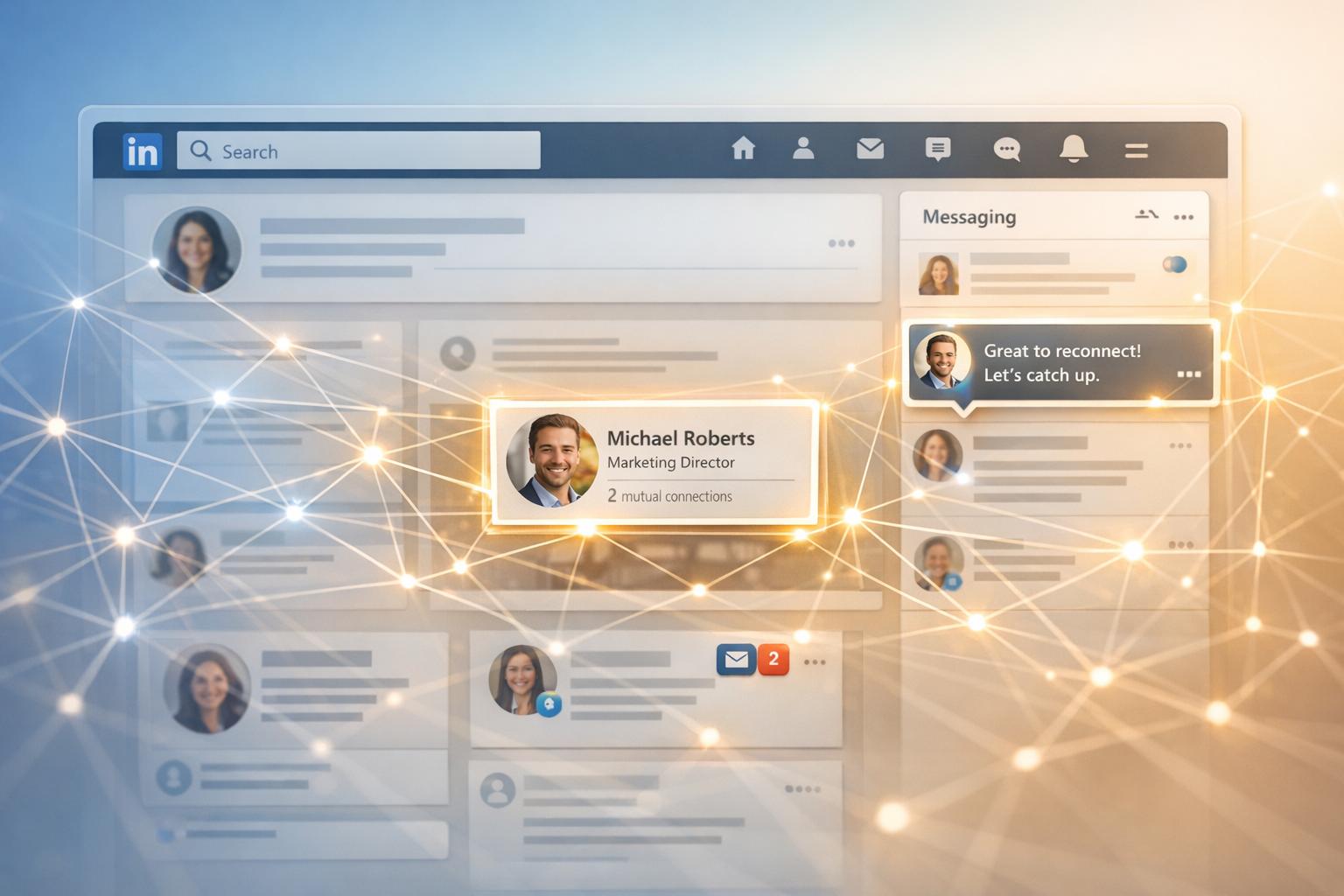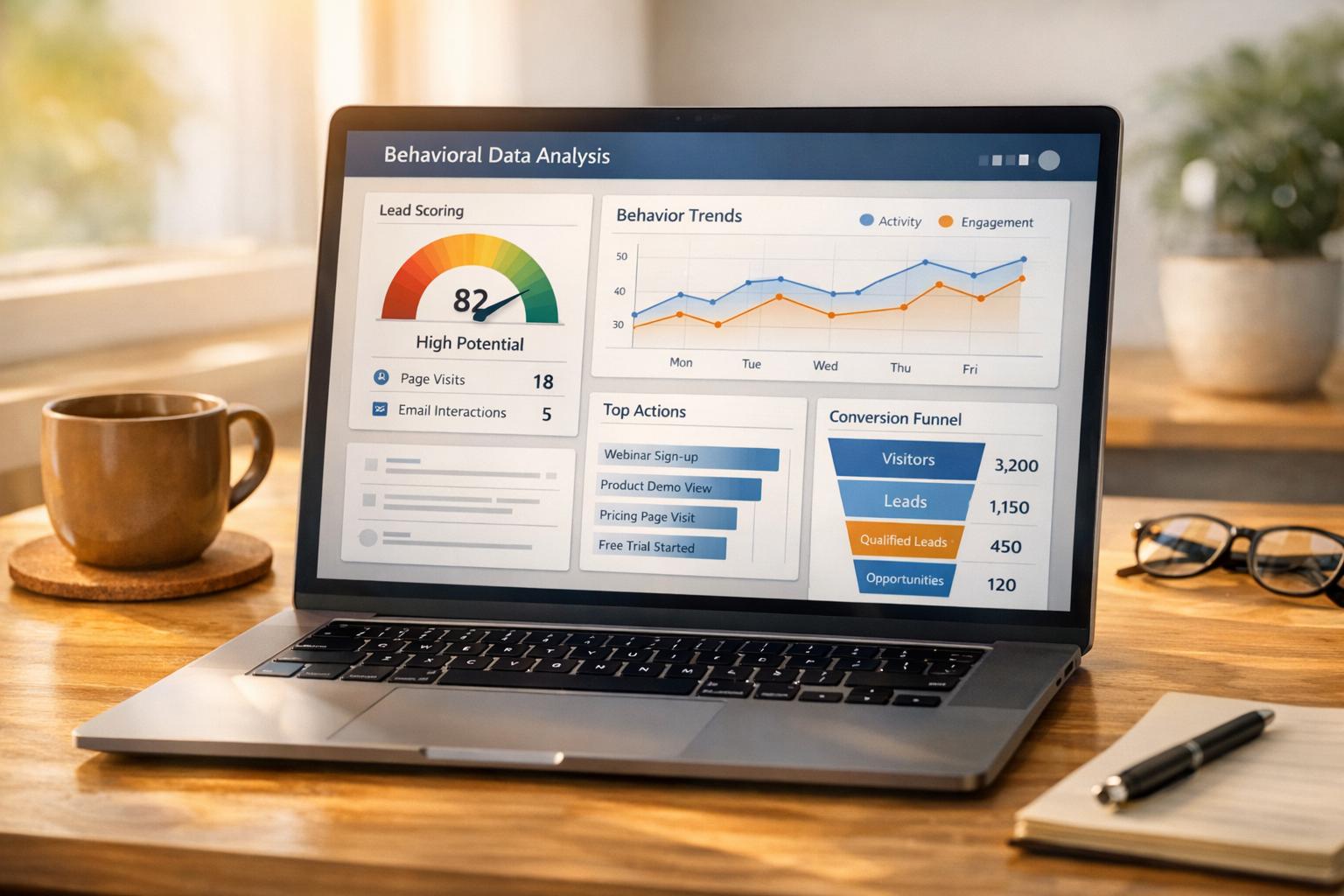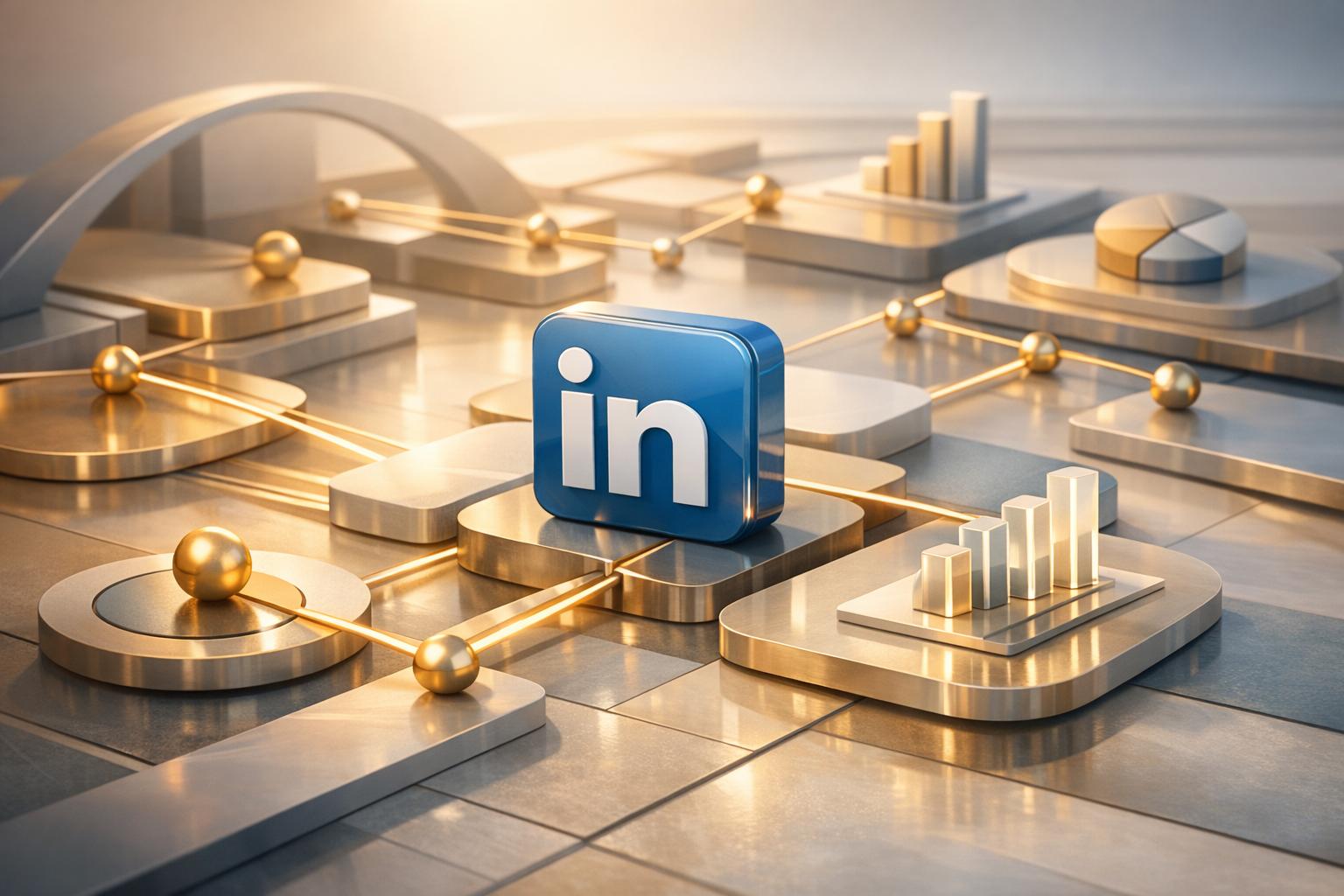
Marketing agencies are leveraging white label lead generation platforms to add $10,000 in monthly recurring revenue (MRR). These systems allow agencies to offer AI-powered tools under their branding, streamlining lead generation while maintaining control over pricing and client relationships. Here's how agencies achieve this growth:
- Key Features: Platforms include LinkedIn automation, email outreach, CRM integrations, and advanced lead scoring.
- AI Advantages: Automates outreach at scale, personalizes messaging, and identifies high-value leads.
- Revenue Growth: Agencies create tiered pricing models (e.g., $500–$4,000/month) and upsell add-ons like advanced reporting or priority support.
- Client Retention: Providing branded reports and measurable ROI strengthens client trust and boosts renewals.
AI Lead Generation with White Label Suite & HighLevel - From Offer to $50K MRR (Live Webinar)
How to Choose the Right White Label Lead Gen System
Finding the right white label lead generation system means selecting one that aligns with your agency's specific needs. To make the best choice, focus on key features, compliance standards, and seamless integrations.
Must-Have Features to Look For
Custom branding is non-negotiable. A good system should allow you to fully customize logos, color schemes, domains, and templates. This reinforces your agency's identity and helps drive better conversion rates.
Smart lead scoring is another must. Modern systems can evaluate prospects based on factors like engagement, company size, job titles, and behavior. This makes it easier to focus on high-value leads, ultimately improving your team's efficiency and conversion rates.
LinkedIn automation with built-in safety measures is critical for B2B lead generation. Look for features like connection request limits, message delays, and profile viewing restrictions to ensure compliance with LinkedIn's terms of service. Personalization tools for follow-ups and sequences can help you scale outreach efforts while keeping interactions authentic.
Native CRM integrations are essential for smooth operations. The system should sync contacts, conversations, and lead statuses automatically with platforms like Salesforce, HubSpot, or Pipedrive, ensuring a steady flow of predictable monthly recurring revenue (MRR).
Regulatory compliance is key. The platform must meet U.S. standards like GDPR and CAN-SPAM, with features like consent tracking and unsubscribe options built in.
Advanced analytics are a game-changer. Look for tools that track response rates, connection rates, meeting bookings, and revenue attribution. Customizable dashboards for branded reporting can provide valuable insights to refine your strategies.
SalesMind AI: A Complete Solution

SalesMind AI stands out as an all-in-one white label platform designed to scale your agency's lead generation efforts. Combining LinkedIn automation with AI-driven personalization, it delivers consistent results across multiple client accounts.
The platform offers a unified inbox that consolidates LinkedIn conversations from all accounts. This makes it easier to manage campaigns while maintaining a personalized touch. Its AI-powered messaging system analyzes prospect profiles and company details to craft messages that feel tailored and engaging.
Intelligent lead scoring is a core feature of SalesMind AI. It evaluates prospects using data points like company growth, recent funding, job changes, and engagement patterns. This ensures your team can focus on the leads most likely to convert, improving overall campaign success and client satisfaction.
With seamless CRM integration, the platform automatically syncs lead details, conversation history, and engagement metrics with major sales tools. This eliminates the hassle of manual data entry and minimizes the risk of missing opportunities.
Real-time lead tracking provides instant insights into campaign performance across all client accounts. Metrics like connection rates, response rates, and meeting bookings help agencies make informed, data-driven adjustments to optimize results.
Feature Comparison and Benefits
Understanding the differences between platforms is essential for making the right choice. Here's a quick comparison:
| Feature Category | Basic Systems | Advanced Platforms | SalesMind AI |
|---|---|---|---|
| Branding Customization | Logo replacement only | Full theme customization | Complete white-label solution with custom domains |
| AI Capabilities | Basic automation | Smart sequencing | Advanced personalization with lead scoring |
| LinkedIn Safety | Basic limits | Enhanced protection | Intelligent behavior mimicking with safety controls |
| CRM Integration | Manual export | Limited native connections | Seamless sync with major platforms |
| Analytics Depth | Basic metrics | Standard reporting | Advanced attribution and ROI tracking |
| Multi-Account Management | Single account focus | Basic multi-account | Unified inbox for unlimited accounts |
Scalability is a major factor as your agency expands. Basic systems often struggle to handle multiple client accounts, leading to inefficiencies and more manual work. Advanced platforms like SalesMind AI are designed to manage numerous campaigns simultaneously without compromising performance.
Cost analysis also reveals key differences. While basic systems might seem cheaper upfront, hidden fees for extra features, integrations, and support can quickly add up. Comprehensive platforms often deliver better value by including advanced tools in their base pricing.
Ease of implementation is another consideration. Some systems demand significant technical setup and ongoing maintenance, while others, like SalesMind AI, offer plug-and-play functionality that gets you up and running quickly. Be sure to assess your team's technical skills and resources when making a decision.
The ideal white label lead generation system should feel like a seamless extension of your agency. It should enhance productivity, minimize manual tasks, and deliver measurable results for your clients. By focusing on these criteria, you'll set the stage for integrating AI-powered solutions into your workflow in the next phase.
How to Add AI-Powered Tools to Agency Workflows
Integrating white label lead generation systems into your agency's workflow can be a game-changer, especially when aiming for a $10K MRR boost. But to make it work, you need a structured approach that minimizes disruptions to ongoing client projects. Breaking the process into clear phases ensures a smoother transition.
Client Onboarding and Branding Setup
Start by implementing a streamlined onboarding process to gather essential branding elements like client logos, color schemes, fonts, and marketing materials. This ensures all tools align with each client’s identity from the start.
Set up custom domains to maintain brand consistency. For instance, you might use subdomains like "leads.clientname.com" or "outreach.agencyname.com." Be sure to account for DNS propagation time when planning launch dates.
Customizing templates is more than just adding logos. Dive into your client’s communication style by reviewing their email signatures, website copy, and LinkedIn posts. This helps you create message templates that feel authentic, which can significantly improve engagement rates.
For added professionalism, set up role-based access and branded login portals. This ensures each client has a personalized dashboard while keeping their data separate.
Before going live, test everything - messaging, links, and analytics codes. Taking this step avoids errors that could harm client relationships. Once onboarding and branding are in place, you’re ready to introduce AI tools to elevate messaging and lead scoring.
Setting Up AI Messaging and Lead Scoring
Start by configuring lead scoring criteria based on your client’s ideal customer profile. Factors like company size, industry, and past engagement can be weighted to match their specific goals.
Schedule outreach and follow-ups to align with U.S. business trends, targeting optimal days for better response rates. Personalize messages with dynamic elements, such as referencing recent industry news, to make them more relevant to recipients. A/B testing can further refine your approach by analyzing the performance of different subject lines, opening statements, and calls to action.
Make sure your outreach complies with platform guidelines. For example, LinkedIn’s acceptable use policies should guide your connection and messaging limits. Always include clear opt-out instructions and maintain suppression lists to respect recipients’ preferences.
Once your messaging and lead scoring are set, link these configurations to your CRM for unified management.
Connecting with Existing CRM and Sales Tools
Integrating your CRM and sales tools ensures seamless lead management. Start by setting up API connections to sync lead data and campaign metrics with your CRM. Refer to the platform's documentation for specific integration steps.
Map critical details like company names, job titles, industries, and contact information accurately between systems. Adding custom fields for platform-specific data ensures you keep a complete record of every interaction.
Automate workflows to simplify the handoff between marketing and sales teams. For instance, you can set rules to assign leads based on criteria like region or company size. Notifications can also be configured to prompt timely follow-ups when high-value leads show interest.
To avoid confusion, implement duplicate prevention measures using unique identifiers like email addresses or profile URLs. This ensures prospects don’t receive conflicting messages.
Finally, ensure your CRM provides unified reporting on lead sources. A consolidated view of performance metrics is crucial for measuring ROI and fine-tuning your strategies. Regularly monitor data sync logs and conduct periodic reviews to catch and resolve any integration issues quickly.
While the initial setup may take some time, once standardized, these processes become more efficient, paving the way for scalable growth and smoother operations.
sbb-itb-817c6a5
How to Reach $10K MRR Growth
Hitting $10,000 in monthly recurring revenue (MRR) requires a well-thought-out plan that balances service offerings, pricing, and scaling. The secret? Crafting service tiers that cater to different client needs while maximizing the revenue you can generate from each account.
Building Service Packages and Pricing Them Right
To start, create three service tiers tailored to various client budgets and goals. Here’s how you can structure them:
- Basic Tier ($500–$800/month): This entry-level option offers core features like LinkedIn outreach, basic lead scoring, and AI messaging. It’s perfect for price-conscious clients who want to test the waters.
- Professional Tier ($1,200–$2,000/month): This mid-level package includes advanced lead scoring, a unified inbox, CRM integration, and detailed reporting. It’s ideal for agencies looking to scale up their operations and will likely be your most popular choice.
- Enterprise Tier ($2,500–$4,000/month): This premium package is designed for larger businesses or agencies with complex needs. It includes custom integrations, dedicated support, advanced analytics, and full white-label branding.
Pricing should also reflect your local market. For instance, agencies in metropolitan areas might support higher fees. Don’t forget to factor in your operating costs - like software licenses, team salaries, and overhead - when setting prices.
To build confidence in your pricing, focus on the value you provide. If your system helps a client close two deals worth $5,000 each every month, a $1,500 service fee is a no-brainer investment for them. Once your tiers are clear, you can also use add-ons to increase revenue.
Boosting Revenue with Add-Ons
Add-ons are a great way to increase your average revenue per client. They often require little extra effort while offering high profit margins. Here are some examples:
- Custom Reporting: Charge $200–$500/month for personalized analytics tailored to client needs.
- Advanced AI Lead Scoring: Add $150–$300/month for algorithms that use industry-specific data and predictive insights.
- Multi-Platform Integration: Offer connections to email platforms and specialized CRMs for an additional $250–$600/month.
- Training and Consultation: Provide team training or strategy sessions at $150–$200/hour.
- Priority Support: Guarantee faster response times and dedicated account management for $300–$800/month.
These extras not only boost your bottom line but also deepen your relationships with clients by addressing their specific needs.
Planning for Revenue Growth and Client Acquisition
Your path to $10K MRR depends on aligning your client acquisition efforts with your pricing tiers. Here’s how different client mixes might look:
| Client Mix Scenario | Basic ($650) | Professional ($1,500) | Enterprise ($3,000) | Clients | MRR |
|---|---|---|---|---|---|
| Balanced Growth | 4 clients | 5 clients | 1 client | 10 | $13,100 |
| Volume Focus | 8 clients | 4 clients | 0 clients | 12 | $11,200 |
| Premium Strategy | 2 clients | 3 clients | 2 clients | 7 | $11,800 |
Start small by onboarding 2–3 Basic clients to generate cash flow and build case studies. Use these successes to upsell them to Professional packages within a few months. Landing even one Enterprise client early can provide stable revenue and open doors to referrals.
Keep in mind that client churn is a reality, especially for new agencies. Plan for a 5–10% monthly buffer in your revenue projections. As your processes improve and client satisfaction grows, churn rates should decline.
Seasonality also plays a role. Demand for B2B lead generation often dips in December and January but picks up in September and October as businesses push toward year-end goals. Factor these trends into your forecasts and acquisition strategy.
Finally, track key metrics like lead-to-client conversion rates, average deal closing time, client lifetime value, and tier upgrade rates. These insights will help you identify areas for improvement and fine-tune your sales process. As you approach your $10K MRR goal, think about expanding into new markets and scaling your operations to meet growing demand.
How to Improve ROI for Agencies and Clients
Boosting ROI relies on tracking meaningful metrics, refining strategies, and maintaining transparent communication through detailed reporting.
Measuring Key Performance Numbers
The first step in improving ROI is identifying and monitoring the metrics that matter most to both your agency and your clients. Pay close attention to LinkedIn conversion rates, cost per lead, and client lifetime value (CLV). These numbers provide a clear picture of how campaigns are performing and where adjustments might be needed.
To calculate cost per lead, divide the total campaign costs - including software, labor, and overhead - by the number of qualified leads generated. This simple formula helps you understand the efficiency of your investment.
CLV, on the other hand, focuses on the bigger picture. By tracking how long clients stay with your service and the revenue they generate over time, you can evaluate the long-term profitability of your efforts. Additionally, LinkedIn-specific metrics like connection acceptance rates, message response rates, and meeting bookings offer early indicators of success. Once these metrics are in place, you can shift your energy toward fine-tuning campaigns to drive better results.
Improving Systems and Campaigns
The real magic happens when you continuously optimize your systems and campaigns. Start by running A/B tests on your AI messaging templates to uncover what resonates most with your audience. Experiment with different subject lines, message lengths, and calls to action to find the winning formula.
Revisit your lead-scoring criteria and analyze which leads are converting into customers. This can help you refine your outreach timing - targeting prospects during peak LinkedIn activity for maximum impact.
Take advantage of tools like SalesMind AI to supercharge your efforts. Use its advanced customization features to tailor messages based on specific prospect data, recent company updates, or shared connections. Segmentation is another game-changer: craft unique messaging for different audience groups, such as C-level executives, mid-level managers, or decision-makers in specific industries. This personalized approach ensures your campaigns address their distinct challenges and needs.
Regular performance reviews and monthly team meetings are essential for staying on track. These check-ins allow you to identify what's working, address any bottlenecks, and plan targeted adjustments to keep improving.
Using Branded Reports to Keep Clients
Once your campaigns are optimized, the next step is to build trust and loyalty through professional, branded reports. These reports should go beyond the numbers, combining visual data with strategic insights to clearly demonstrate the value of your services.
Include charts, benchmark comparisons, and actionable recommendations to highlight progress and future opportunities. Comparing performance against industry averages or past results helps reinforce the return on investment your agency delivers.
Make the reports even more engaging by showcasing success stories, such as notable closed deals or standout campaign achievements. These real-world examples make the data more relatable and memorable for clients.
Finally, schedule regular review calls to walk clients through the reports, gather their feedback, and discuss potential opportunities for growth. Consistent, high-quality reporting not only strengthens client relationships but also increases the likelihood of contract renewals and expanded service agreements.
Conclusion: Growing Revenue with White Label Lead Gen
White label lead generation systems give marketing agencies the tools to grow their monthly recurring revenue (MRR). Reaching that $10,000 MRR milestone isn’t just about adopting new technology - it’s about positioning your agency as a go-to solution in a competitive B2B landscape.
To succeed, you need a platform that combines white label features, AI-driven messaging, and smooth CRM integration. Tools like SalesMind AI offer LinkedIn automation, advanced lead scoring, and a unified inbox, helping agencies deliver polished and effective outreach campaigns.
A well-structured, tiered pricing strategy allows agencies to steadily hit their $10K MRR goal while keeping operational costs in check.
The most successful agencies focus on client retention as the foundation of long-term profitability. By tracking performance, optimizing campaigns, and delivering professional branded reports, you can consistently demonstrate value to clients. This not only fosters trust but also encourages clients to deepen their investment, driving both short-term results and lasting growth.
White label lead generation is reshaping how agencies operate, positioning them as leaders in B2B sales automation. With LinkedIn dominating professional networking and AI advancing rapidly, agencies that embrace these systems today will be ready to seize the opportunities of tomorrow.
FAQs
How can white label lead generation systems help marketing agencies control their pricing and client relationships?
White label lead generation systems empower marketing agencies to provide services under their own brand, giving them complete authority over pricing and client relationships. This approach allows agencies to tailor their rates to align with their business objectives while delivering a seamless and branded experience for their clients.
By handling client interactions directly, agencies can cultivate trust and foster loyalty, paving the way for lasting partnerships. On top of that, white label solutions simplify processes, making it easier for agencies to expand their offerings without compromising on quality or control.
What key features should I prioritize when choosing a white label lead generation platform for my agency?
When selecting a white label lead generation platform, it's important to focus on features that align with your agency's branding, streamline operations, and support long-term growth. One key aspect to consider is customization - opt for platforms that let you incorporate your logo, brand colors, and custom domains. This creates a polished, seamless experience for your clients and reinforces your brand identity.
Equally important are reporting tools. Look for platforms that offer real-time dashboards and the ability to generate automated, branded reports. These features help keep your clients informed and confident in your services without adding extra work on your end.
Integration is another crucial factor. Choose a platform that works well with the tools your agency already relies on, such as CRMs, ad networks, or social media management software. This ensures smoother workflows and less time spent juggling multiple systems. Lastly, make sure the provider offers dependable support, so you can focus on growing your business while they handle any technical challenges. A platform with these features can help you consistently deliver top-notch results and drive steady revenue.
How can marketing agencies seamlessly integrate AI-powered tools into their workflows without disrupting current client projects?
Marketing agencies looking to embrace AI-powered tools can do so effortlessly by opting for white-label solutions that are simple to adopt. These tools enable agencies to personalize the software with their own branding - think logos, color palettes, and more - ensuring a cohesive experience for both their team and their clients.
To make the transition smoother, focus on tools with user-friendly interfaces and seamless integration with current systems. This approach allows agencies to roll out new services quickly without halting ongoing projects. Begin with a small-scale trial, test the tools within your team, and gradually increase their usage. This step-by-step method minimizes disruption and helps deliver better outcomes for clients.


.avif)


